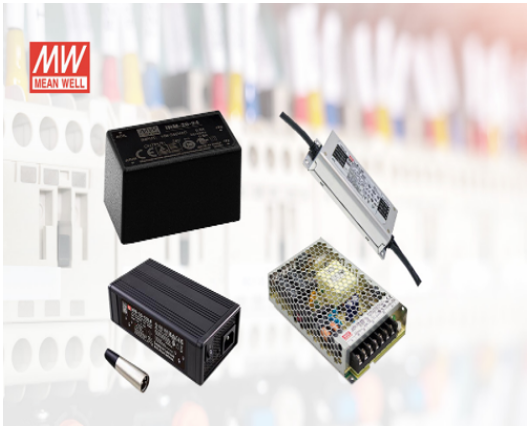簡介
Power supply refers to the device that furnishes the necessary electrical energy to electronic devices, machinery, or systems. It serves as a link between the power grid and the utilization of electrical appliances, converting high-voltage electrical energy into low-voltage electrical energy suitable for equipment operation. Power supply plays a crucial role in modern society as nearly all electronic devices require a power source to function properly.
Principles of Power Supply
The principle of a power supply involves converting alternating current (AC) into the required direct current (DC) to meet the operational requirements of electronic devices. While AC power is common in power systems, most electronic devices require stable DC power to operate correctly. A power supply typically comprises components such as rectifiers, filters, and regulators, which work together to ensure a stable DC output. Rectifiers convert AC power into DC power, often utilizing components like diode bridges or thyristors. Filters remove the ripple components from the DC output, providing a smoother output. Regulators stabilize the output voltage, employing technologies such as linear regulators or switch-mode regulators.Characteristics of Power Supply
Stability: A power supply must provide stable output voltage and current to ensure the normal operation of electronic devices. It should maintain stable output even in the face of input voltage fluctuations or changes in load conditions.
Reliability: A power supply should demonstrate high reliability during prolonged operation to avoid equipment downtime or damage. It typically incorporates multiple protection measures such as overload protection, overheat protection, and short-circuit protection to prevent failures.
Efficiency: A power supply should maximize energy conversion efficiency to minimize power consumption. This helps reduce energy consumption, lessen environmental impact, and improve cost-effectiveness.Classification of Power Supply
3.1 DC Power Supply vs. AC Power Supply: Depending on the type of electrical signal output, power supplies can be categorized as DC power supplies and AC power supplies. DC power supplies output DC power, suitable for most devices requiring stable DC power, such as computers and communication equipment. AC power supplies output AC power, suitable for devices that require AC power to operate, such as household appliances and lighting equipment.
3.2 Linear Power Supply vs. Switching Power Supply: Based on the voltage stabilization method, power supplies can be classified as linear power supplies and switching power supplies. Linear power supplies utilize linear regulators to stabilize voltage through voltage reduction and filtering, characterized by simplicity and reliability. Switching power supplies employ switching devices (such as transistors, MOSFETs, etc.) for high-frequency switching, regulating voltage by controlling the ratio of switch-on to switch-off time.
3.3 Conventional Power Supply vs. Renewable Energy Power Supply: According to the energy source, power supplies can be divided into conventional power supplies and renewable energy power supplies. Conventional power supplies mainly rely on traditional methods such as thermal power generation, hydroelectric power generation, or nuclear power generation to produce electrical energy, such as coal-fired power plants, hydroelectric power stations, and nuclear power plants. These power sources provide stable power supply capabilities but contribute to pollution and environmental impact. Renewable energy power supplies utilize renewable energy sources from nature for energy conversion, such as solar panels, wind turbines, and hydroelectric generators. These power sources harness the advantages of renewable energy, reduce reliance on traditional energy sources, and are environmentally friendly, emitting no carbon dioxide or other pollutants.
In addition to the above classifications, power supplies can also be subdivided based on their application areas, such as industrial power supplies, transportation power supplies, aviation power supplies, and medical power supplies. Each field has different requirements for power supplies, leading to differences in corresponding power supplies. In summary, as an essential component for the normal operation of electronic devices, power supplies play a vital role in modern society. Through continuous technological innovation and development, power supplies will continue to improve efficiency, reliability, and environmental friendliness to meet the demand for power supply.
相關(guān)討論
推薦內(nèi)容
使用TI解決方案為Xilinx新型FPGA提供電源(三)
使用TI解決方案為Xilinx新型FPGA提供電源(二)
通過 PMBus 電源向ASIC、FPGA 以及 DDR 電壓軌供電設(shè)計
結(jié)合升降壓拓?fù)浜?USB Type C? 供電,以實現(xiàn)最大功率密度
如何使用開關(guān)型充電器設(shè)計安全可靠、有長待機(jī)時間、且由微型電池供電的產(chǎn)品
42/5000 以太網(wǎng)供電(PoE)培訓(xùn)系列
電池供電的電機(jī)驅(qū)動:如何設(shè)計一個高性能功率級系統(tǒng)?
TI近場供電NFC參考設(shè)計介紹
僅用一顆葡萄供電的微處理器
TI近場供電NFC參考設(shè)計介紹
保證電池供電設(shè)備安全
利用高壓母線轉(zhuǎn)換模塊 (BCM) 為LED驅(qū)動器供電
采用 LT8697 為汽車中的USB VBUS供電
直播回放: PI 在無需DC-DC變換器的多路輸出電源設(shè)計中實現(xiàn)高效率和出色的輸出調(diào)整率
開關(guān)電源之Buck變換器的環(huán)路分析與補(bǔ)償
自激振蕩開關(guān)電源電路構(gòu)成特點及工作原理介紹
運算放大器的單電源供電方法
PCB電源供電系統(tǒng)的分析與設(shè)計
基于TMS320F28335的開關(guān)電源模塊并聯(lián)供電系統(tǒng)源碼
用開關(guān)調(diào)節(jié)器為雙電源精密ADC供電
德州儀器(TI)用于墻壁供電應(yīng)用的德州儀器(TI)系統(tǒng)電源設(shè)計
電池供電電源設(shè)計
2011年全國大學(xué)生電子設(shè)計大賽A題報告(開關(guān)電源模塊并聯(lián)供電系統(tǒng)) (1).doc
2011電子設(shè)計大賽A題開關(guān)電源模塊并聯(lián)供電系統(tǒng)技術(shù)報告.doc
基于TMS320F28335的開關(guān)電源模塊并聯(lián)供電系統(tǒng).rar
雙電源供電系統(tǒng)
A-開關(guān)電源模塊并聯(lián)供電系統(tǒng)
單電源供電4~20ma轉(zhuǎn)0~3.3V呈線性關(guān)系圖表
以太網(wǎng)供電電源(多級別)
開關(guān)電源模塊并聯(lián)供電系統(tǒng)(主要參考技術(shù)報告實物有改動)
使用開關(guān)電源供電的高速高精度模數(shù)轉(zhuǎn)換電路設(shè)計
LC諧振無線供電電源
UFI-POWER——基于CD42的隨身WIFI便攜電源/供電倉/充電寶
(mini版本)UFI-POWER——基于CD42的隨身WIFI便攜電源/供電倉/充電寶
78xx+79xx雙電源供電板
BLV 一分四線電源供電
輸出電容器組,用于信號供電或雙電源耳機(jī)放大器
LIGHTING-POWER-POE-GEVB:以太網(wǎng)供電 (PoE) 電源模塊(90 瓦),互聯(lián)照明平臺
VCT2 離線語音模組-涂鴉智能 單電源供電
12V集中供電HUB_濾除開關(guān)電源紋波
單片機(jī)供電電源部分的接線
數(shù)碼相機(jī)5通道供電電源MAX1565
子母電話機(jī)不間斷供電電源
供電電源自動轉(zhuǎn)換電路圖
供電電源自動轉(zhuǎn)換電路圖
PLC供電電源部分的接線
汽車音響供電電源DC-DC變換器電路
子母電話機(jī)不間斷供電電源







